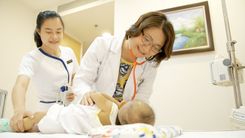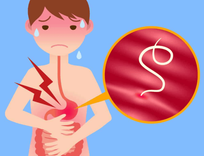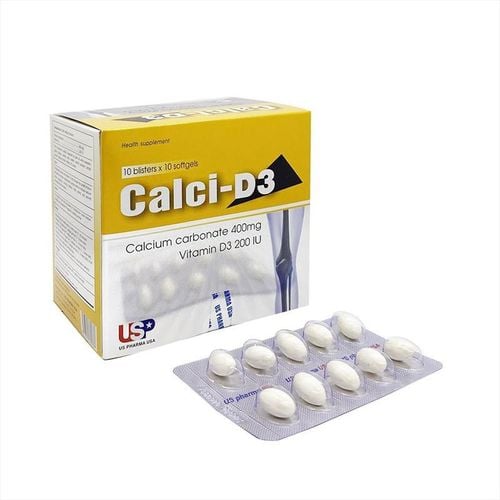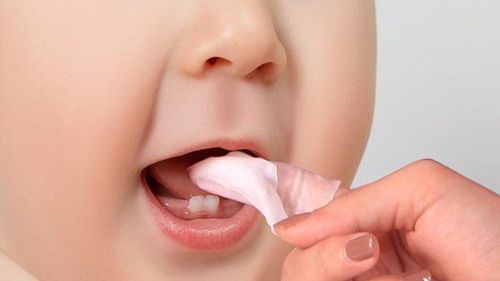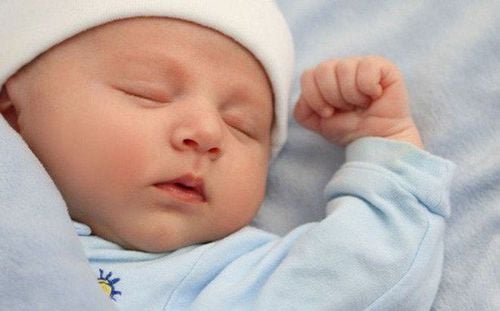This article is professionally advised by Dr. Nguyễn Thái Ngọc Châu - Pediatrics - Neonatology Department, Vinmec Phú Quốc International General Hospital.
Bow-legs occur in most young children. The curvature of the legs usually corrects itself after the child turns 2 years old. The cause of Bow-legs is that toddlers often sway from side to side instead of moving forward, causing their legs to become bowed.
1. What is a bow leg?
Bow-legs is a condition where the legs curve outward, meaning the knees are far apart even when the ankles are close together. Bow-legs is also known as congenital genu varum.
Bow-legs can be a sign of other conditions, such as Blount's disease or rickets, which can lead to arthritis in the knees and hips. Treatment options include braces, casting, or surgery to correct bone abnormalities.
Bow-legs are common in newborns due to the cramped space in the womb. Typically, newborns with Bow-legs do not require treatment. The legs usually straighten as the child begins to walk, typically between 12 to 18 months of age. For children over 2 years old who still have Bow-legs, it is advisable to consult a doctor for examination and treatment.
Trắc nghiệm: Nhận biết sớm dấu hiệu chậm phát triển thể chất và trí tuệ ở trẻ
Nếu 6 tuổi không biết đếm số, 7 tuổi vẫn chưa phân biệt được giữa thực tế và tưởng tượng thì có thể bé chậm phát triển thể chất và trí tuệ hơn so với bạn bè cùng lứa. Bạn đã nhận biết được các dấu hiệu bất thường sớm này chưa? Cùng làm nhanh bài trắc nghiệm sau để trang bị thêm kiến thức cho mình nhé!
The following content is prepared under supervision of Thạc sĩ, Bác sĩ y khoa, Ma Văn Thấm , Nhi , Phòng khám Đa khoa Vinmec Dương Đông(Phú Quốc)
2. What to Do When a Child Has Bow-legs?
Treatment is usually recommended for infants and toddlers unless an associated illness has been identified. Treatment may also be recommended if the condition worsens, or if other illnesses are diagnosed. Treatment options include:
- Special shoes
- Braces
- Casting
- Surgery to correct bone abnormalities
- Treatment of the diseases or conditions causing the Bow-legs
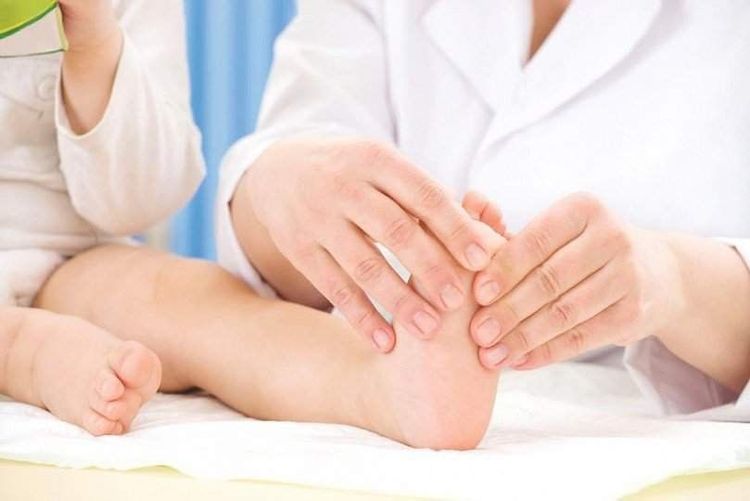
3. Causes of Bow-legs
3.1 Blount's Disease
Blount's disease, also known as tibia vara, occurs when a child's shinbone develops abnormally. As the child begins to walk, the legs are more likely to become bowed.
Blount's disease can become apparent early, but in some cases, symptoms may not be noticeable until the child reaches adolescence. Over time, Bow-legs can lead to knee joint problems.
Blount's disease is more prevalent among females, African Americans, and children with obesity. Children who start walking early are at higher risk. A normal child should begin walking independently between 11 to 14 months of age.
3.2 Rickets
Rickets occurs due to prolonged vitamin D deficiency. The disease softens and weakens the bones, causing Bow-legs.
3.3 Paget's Disease
Paget's disease is a metabolic disorder that adversely affects the bone healing process. As a result, the bones cannot recover as they originally were. Over time, this can lead to Bow-legs and other health issues. Paget's disease is more common in older adults and can be successfully treated if diagnosed and treated early.
3.4 Dwarfism
Dwarfism occurs due to a condition called achondroplasia. This is a bone growth disorder that can lead to bones not developing properly.
3.5 Other Causes
Bow-legs can also result from:
- Fractures that have not healed properly
- Abnormal bone development or bone dysplasia
- Lead poisoning
- Fluoride poisoning
4. Signs of Bow-legs
Bow-legs are easily recognizable. It is when you stand straight with your ankles together, but your knees do not touch. Bow-legs are symmetrical.
In children, most cases begin to appear when they are between 12 to 18 months old. You should talk to a doctor if your child's legs remain bowed or if the condition worsens after the age of 2.
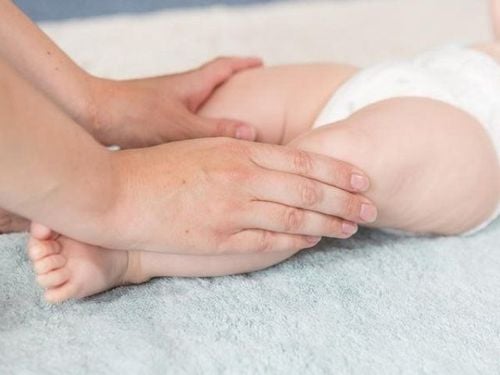
5. Diagnosis of Bow-legs
A doctor can determine the severity and associated health risks by measuring the curvature of the legs and observing your gait. Additionally, the doctor may request X-rays or other imaging tests to detect abnormalities in the legs and knees. Blood tests may also be ordered if the doctor suspects rickets or Paget's disease.
6. Prevention of Bow-legs
Currently, there are no specific measures to prevent the risk of Bow-legs. In some cases, you can prevent the conditions that cause Bow-legs. For example, you can prevent rickets by ensuring that children get enough vitamin D through both diet and sunlight exposure. You should consult a doctor if their legs remain bowed after the age of 2. Early diagnosis and detection of Bow-legs will help you better manage your child's condition.
Arthritis is a common consequence of Bow-legs and may lead to disability. Severe Bow-legs will affect the knees, feet, ankles, and hips due to the uneven pressure exerted on them.
If a person needs a total knee replacement at a young age, bone realignment may need to be performed when they are older. Knee surgery in such individuals can be challenging due to the surgeries they have undergone and the abnormal alignment of the bones.
Children aged 6 months to 3 years are very susceptible to respiratory system problems, respiratory infections, skin diseases, and gastrointestinal infections. Parents need to pay special attention to caring for and providing adequate nutrition for their children. The Pediatrics Department at Vinmec International General Hospital system is the place to receive and examine diseases that newborns and young children are prone to: viral fever, bacterial fever, otitis media, pneumonia in children, etc. With a modern medical facility system, sterile space, minimizing the impact and risk of disease spread, Vinmec will bring satisfaction to customers and is highly appreciated by industry experts with:
- A team of pediatric doctors: including highly qualified experts (professors, associate professors, doctors, masters), experienced, having worked at major hospitals such as Bach Mai, 108. The doctors are well-trained, professional, dedicated, and understand children's psychology. In addition to domestic pediatric specialists, the Pediatrics Department also has the participation of foreign experts (Japan, Singapore, Australia, USA) who are always pioneering in applying the latest and most effective treatment regimens.
- Comprehensive services: In the field of Pediatrics, Vinmec provides a chain of continuous medical examination and treatment services from Neonatology to Pediatrics and Vaccines, according to international standards to help parents take care of their children's health from birth to adulthood.
- Advanced techniques: Vinmec has successfully implemented many advanced techniques to make the treatment of difficult pediatric diseases more effective: neurosurgery, hematopoietic stem cell transplantation in cancer treatment.
- Professional care: In addition to understanding children's psychology, Vinmec also pays special attention to children's play space, helping them play comfortably and get used to the hospital environment, cooperate in treatment, and improve the effectiveness of medical examination and treatment.
To arrange an appointment, please call HOTLINE or make your reservation directly HERE. You may also download the MyVinmec app to schedule appointments faster and manage your reservations more conveniently.


